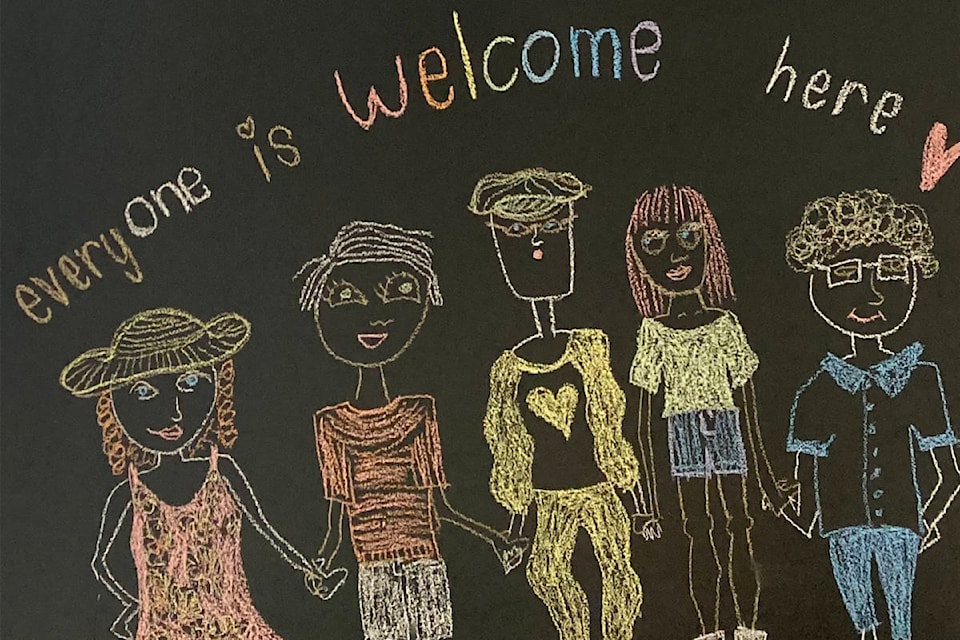by Amber Streukens
ANKORS harm reduction peer navigator
Located in the old Nelson CARES building at 521 Vernon St, the new Co-ordinated Access Hub is a frontline service and drop-in centre for people at risk or experiencing homelessness. Based on the idea that “every door is an open door, with connected services, collaboration, and people having a say in what services they actually want in a space,” this hub has been open for a month and so far the feedback is exciting.
The aim of this pilot project is to jointly deliver frontline services, connect vulnerable people to outreach and basic needs including harm reduction, provide one-door-access to employment supports and co-ordinated access for housing, and increase sector capacity through collaboration and interagency learning.
According to the Reaching Home program manager Andree Patenaude, the Hub is “meant to be a community space, really prioritizing relationships and prioritizing being trauma informed as well in the way that we approach our relationships with people.”
The scope of services available here is extensive. Open seven days a week from 1 to 5 p.m., people can access the drop-in space to relax, connect, get snacks or hydration. There is a small, free store-on-site where people can often access clothing or camping gear. Folks can access Nelson Street Outreach and nurses, as well as get support with health care navigation. There is onsite harm reduction, including episodic overdose prevention, and connection to opioid agonist therapy and pharmaceutical safe supply.
People can also get support with social assistance, and a peer-employment program from Kootenay Career Development Services provides person-centred employment options. According to one participant, “For someone with a history like mine, I couldn’t think of anything better. The peer-employment program is like my launchpad right now.”
This collaborative interagency model is growing in popularity throughout the province.
According to Heather Elliott, community integration specialist for the Ministry of Social Development and Poverty Reduction, similar hubs being created across the province and are focused on a one-stop shop model.
“Part of the rationale is that someone with barriers can tell their story once and the providers can co-ordinate efforts so that the client doesn’t have to travel about town seeking out individual services and telling their story over and over again,” she says.
The events of the past year helped to lay the groundwork for this space. Enhanced interagency collaboration and the strategic utilization of funds to address the urgent needs of people experiencing homelessness during the COVID-19 pandemic enabled the development of numerous pilot projects, including an outdoor encampment, a warming centre, a supported housing project, and a safe supply outreach program. These services emerged to address unmet basic needs, but also served to address the isolation experienced as a result of the pandemic.
This space is “allowing us to offer an even more low-barrier program with an even wider net to reach,” says Dakota May, ANKORS West Kootenay Harm Reduction and Education co-ordinator.
With the closure of ANKORS’ drop-in space during COVID, there has been a need to adapt services to improve access. With harm reduction services available at the Hub and COVID restrictions loosening, we may be seeking volunteers to support this ongoing expansion. Please reach out to education@ankors.bc.ca if you are interested in volunteering with our harm reduction and overdose prevention team.
“Collaborative community organizations, like Nelson CARES, ANKORS, Nelson Community Services, the Nelson Committee on Homelessness, but also people with lived expertise, including REDUN, have had a say in how things are shaping up with this response,” says ANKORS executive director Cheryl Dowden.
The involvement of people with lived and living experience in the development and implementation of services designed to serve them is a best practice approach, and the results are clear. Inclusion in decision-making and service-delivery fosters empowerment and connection for service-users.
As one peer involved at the Hub states, “The opportunity for me to come into this and just think it’s awesome and then now directly have a role in how it turns out gives a sense of ownership, therefore a sense of pride.”
Service providers are already seeing positive results from this model. “People are contributing,” says Patenaude. “It just goes to show that when you create safe spaces that are tailored to people’s unique needs that they feel safer and are able to act in a way that feels good to them too.”
The tone is optimistic, and people accessing the space feel hopeful about its potential. “a setting like this, where it can go, with the team that’s here, it’s limitless,” says a Hub peer.
